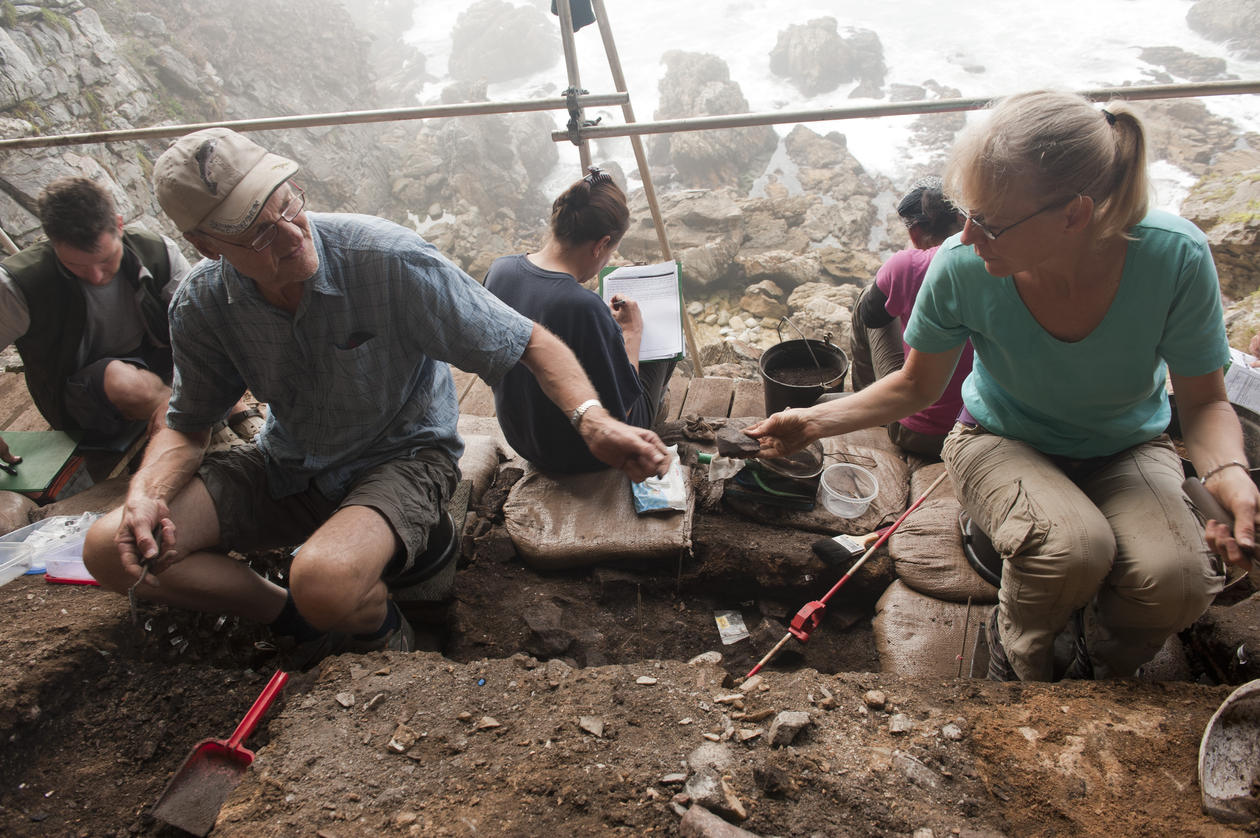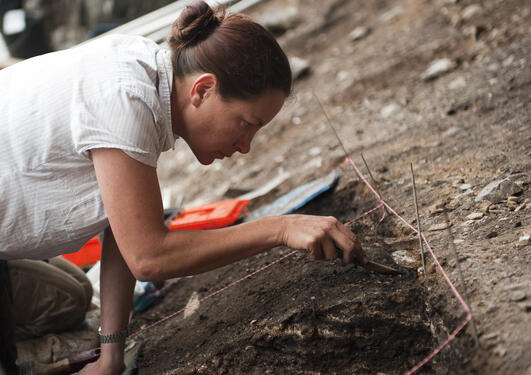The stone reader
" Archeology is a fascinating way to learn about human evolution because it opens up to all disciplines and allows us to look at human behavior from a holistic perspective".

Main content
Sarah Wurz is the principal investigator (PI) at the Middle Stone Age site Klasies River, outside Cape Town. Klasies River is one of the main sites from which researchers in the Sapience team conduct analyses in search for more answers about when we became modern human beings. Klasies River is one of the largest archeological sites from the Middle Stone Age and full of interesting findings.
How did it all start?
Wurz started her academic career by studying music and psychology. After finishing her degrees, she worked as a school advisor for some years before going back to university, where she got herself drawn into archeology in a way she had not anticipated.
"I have always been interested in questions like where do we come from and how did it all start", Wurz says.
When the opportunity came to go back to university, she decided to sign up for a course in archeology to see if she could find some answers to her questions.
"The more I learned and understood, the more fascinated I became", Wurz says with a smile.
Today Sarah holds a PhD in the subject and is an expert in lithic analysis, meaning examination of stone tools and other chipped stone artifacts. She is a well-published researcher, and her colleagues tells us that she has the ability to “read” a stone like only very few. Her combination of strong academic background and fieldwork experience has made her one of the most sought after lithic analysts in the world.
The secret of how to know
How can you tell when something which looks like a normal flake from a stone to us, can be an important piece, like a stone tool?
"With experience, you learn to identify certain features when you examine a stone. However, it is only when doing a proper investigation that you can know for sure if something has a bigger meaning. The secret is to find the right method that can bring you back to the original form and shape. In other words, she says, you need to work out how that piece of stone became a tool".
Wurz tells us that they have a set of methods that they know and can apply to new findings, but sometimes they need to invent new ones in order to reconstruct a discovery.
"During the examination, you will get an idea of how much energy and various materials have been involved in the process of making something like a stone tool. You will also be able to tell how many cognitive steps has been involved in order to make it", Wurz explains.
The stories from Klasies River
Klasies River, where she works as a PI, has a Middle Stone Age time span from 120 000 to 50 000 years ago, and contains a wealth of material and information on culture - in ornaments, pigments, stone and bone tools. During excavation, they have found remains of shellfish, fauna and micro fauna, stone tool materials and fireplaces.
"When we look at all the different remains together, we can definitely say that humans have lived here repeatedly. By analyzing the reduction sequences followed in the production of items like ornaments, pigments, stone and bone tools, we get information about the lives of our ancestors. The remains of shellfish tells us that they were hunters of the sea and the findings of remnants of food tells us that the food had been cooked or grilled. This we know by looking at the remains from the fireplaces, for example", Wurz says.
Human collaboration
Wurz likes to approach any subject from a multi-disciplinary perspective. In addition to being a lithic analyst, she has also investigated how we developed the ability to make music and how this corresponds with humans becoming bipedal.
Bipedalism made running possible and this again coincided with distinct changes in the vestibular canal dimensions, where we find the inner ear. Studies have explained how the inner ear plays an important role in perceiving and producing rhythm, and that bipedalism not only made refined dancing movements possible, but also changed our rhythmic capabilities. According to Wurz this is also important when we try to understand how humans started to collaborate in larger groups.
The holistic circle
"We know that rhythmic movement has been involved in building trust amongst humans. Research has proven that you can extend the trust and build social bonds between and within groups by dancing together, through synchronizing and entrained movement".
Wurz says that she likes to think about human evolution as a holistic circle, with rhythmic movement as the starting point for increased social interaction and cooperation, and the basis for developing new ideas and technology.
"Saying that, I also think that when we look into our shared origins, it is possible to understand that our commonalities overshadow our differences".

